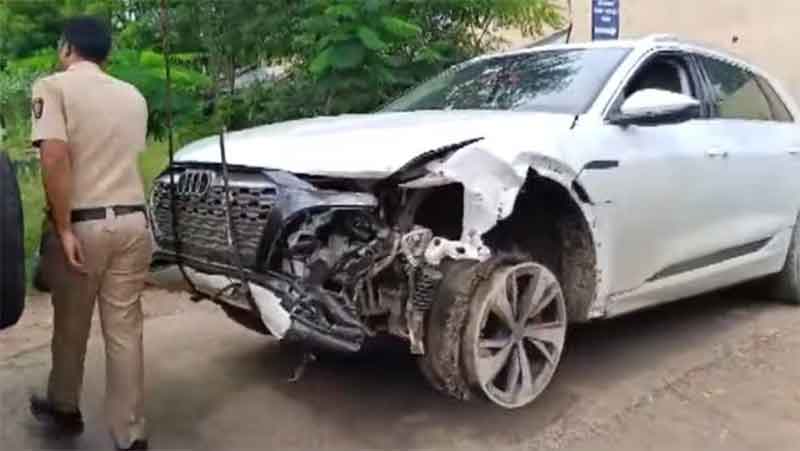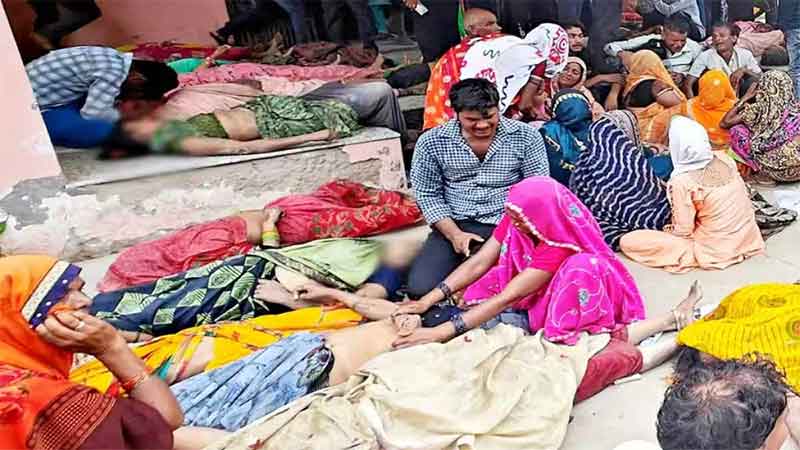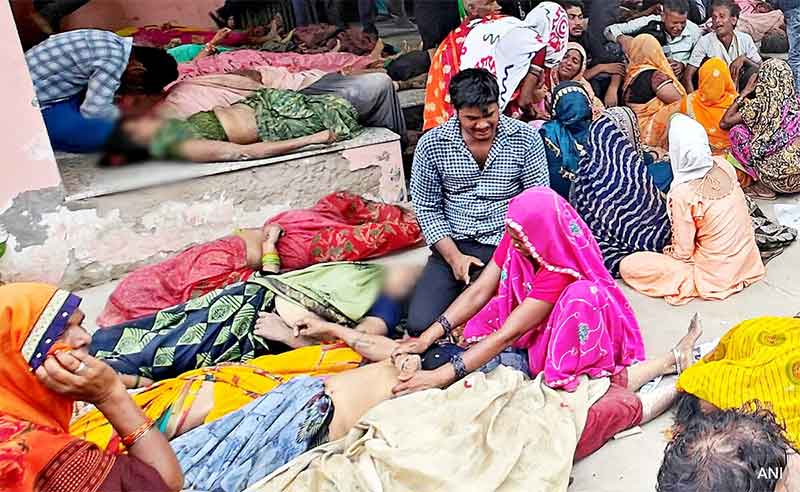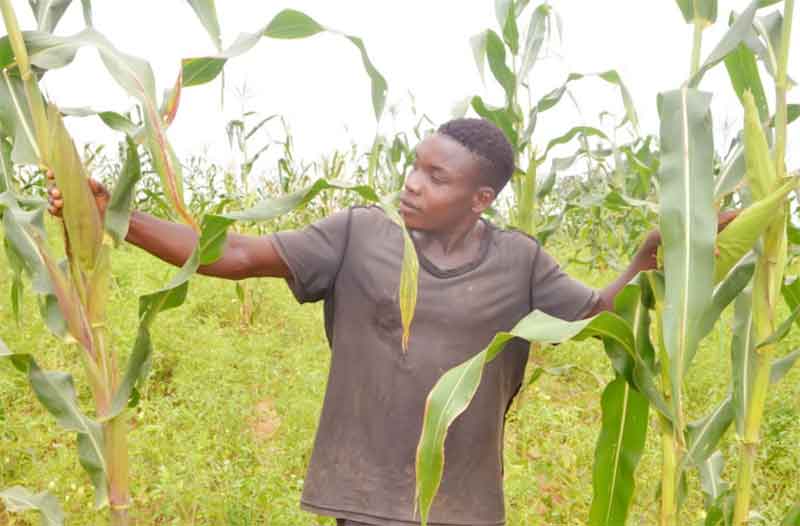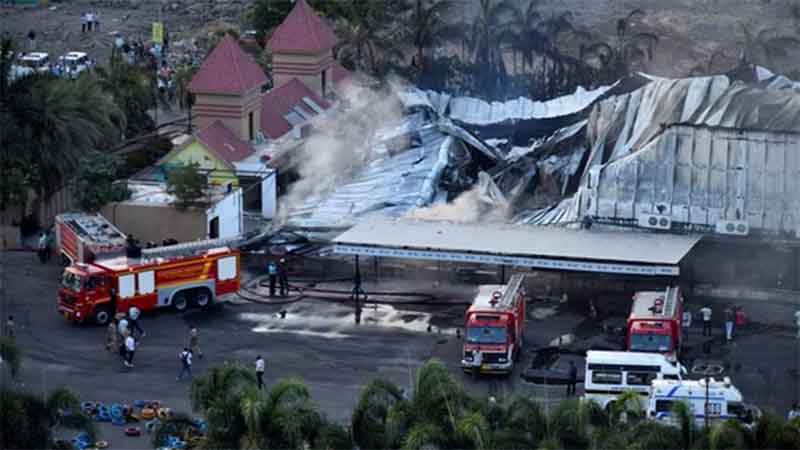
This week-end (May 25 and 26) saw a sudden spurt of many serious accidents in India. In six serious accidents that were reported at the national level, at least 65 persons were killed, many were seriously injured and several others were reported missing. Some of these accidents were related to glaring neglect of safety measures.
On May 25 in a fire that broke out at a gaming zone in Rajkot (Gujarat) 33 persons were killed and many remained missing. The Gujarat High Court has already called this a man-made disaster as fire safety provisions in the sprawling entertainment zone were almost entirely missing. The operators of the amusement park had not applied for fire no objection certificate. Even inflammatory materials were stored here, it has been reported. At a wider level, glaring shortcomings in Gujarat’s development regulations have allowed illegal recreational facilities to proliferate, ignoring safety. Children are among those who are badly endangered in the process.
In another most horrible accident that has shocked people, seven newborn babies were burnt to death in a hospital fire in Delhi while five others are under treatment for recovery. Courageous rescue effort by some neighbors could rescue some children. The hospital’s license was inadequate and had expired. The building had no fire extinguishers or emergency doors.
On May 26 in another fire accident in a residential building in Krishna Nagar area of Delhi, 3 persons were killed and 10 persons were injured, while several parked vehicles were also reduced to ashes. On the night of May 25 a bus carrying pilgrims to Uttarakhand overturned in Shahjahanpur district (UP) when a gravel carrying dumper overturned on their bus, killing 12 pilgrims and seriously injuring 9 others. This incident was reported after several other accidental deaths involving pilgrims had been reported in the previous few days.
On May 25 four workers were killed and five others were seriously injured when a private bus rammed into two roadside shanties in Panaji, Goa. The driver was under the influence of alcohol at the time of the accident and threatened laborers that they will be killed if they complain about the accident. Medical help reached the victims very late.
At least 3 coal miners were feared dead in a rat-hole mine accident in Patkal hills, Tinsukia district of Assam. A landslide sealed mine’s entrance. Mafias operate hundreds of illegal mines here which are very unsafe and many miners have died here from time to time, but these deaths are often hushed up.
Meanwhile a serious train accident on the Konkan route was barely averted by timely action on the part of a track maintainer. Trains passing between forest fires in Himachal also faced a serious threat which could be averted.
These various accidents and near accidents on a single weekend draw attention to the increasing risks from a wide-range of accidents, only a few of which get reported in the national press.
Many people see accidents mainly in terms of road accidents. They may find it surprising to know that according to a WHO data base on worldwide accident related deaths, the number of deaths caused by road accidents, while very high in itself, is still significantly less than deaths caused by other accidents. More specifically, this data-base tells us that while deaths caused by road accidents in a single year are around 1.3 million, deaths caused by other accidents are about 2.2 million. These other sources include falls, drowning, fires, poisoning etc.
While domestic accidents get very little attention in accident research, data going back to about a decade for Britain reveals that the number of deaths in home accidents in 2013 in Britain were three times higher than the number of deaths in road accidents.
By focusing most attention only on road accidents, we do not get a comprehensive understanding of the situation needed for policy.
This becomes even clearer when we look at the number of injuries and disabilities caused by accidents. WHO data tells us that the number of injuries and disabilities caused by road accidents is about 35 million in a year, whereas ILO data tells that the number of injuries caused by occupational or workplace accidents in a year is about 395 million, about 11 times the injuries caused by road accidents.
To take this statistical analysis further in a different context, according to data provided by the Royal Society for the Prevention of Accidents, in Britain in 2013 home-place or domestic mishaps caused about 2.7 million accident and emergency (A and E) department attendances. The number of injuries in domestic accidents was about 13 times higher than the numbers injured in road accidents.
Again if we look at injuries and disabilities caused by all accidents, these are many times more than deaths caused by all accidents, and often result in long-term difficulties and complications. Yet while discussing the issue, often only the number of deaths caused by accidents is highlighted.
Subscribe to Our Newsletter
Get the latest CounterCurrents updates delivered straight to your inbox.
It is important to make available highly reliable information and also to organize and present it in a much better way so that it can make the best possible contribution at both policy and implementation levels. In fact this research can contribute much to the better organization of the accident prevention effort itself with improved cooperation of various agencies involved.
What is of the greatest importance is to improve safety measures and to increase safety consciousness among people regarding all accidents, adopting a comprehensive approach to the reduction of all accidents. Just as disaster prevention and response authorities have been set up in all districts in India, similarly accident prevention and response authorities should also be set up so that comprehensive response and planning to reduce all accidents as much as possible can become a reality. In addition it is important to allot adequate budgets for prevention of accidents.
Bharat Dogra is Honorary Convener, Campaign to Save Earth Now. His recent books include Planet in Peril, Protecting Earth for Children, Man over Machine and A Day in 2071.



